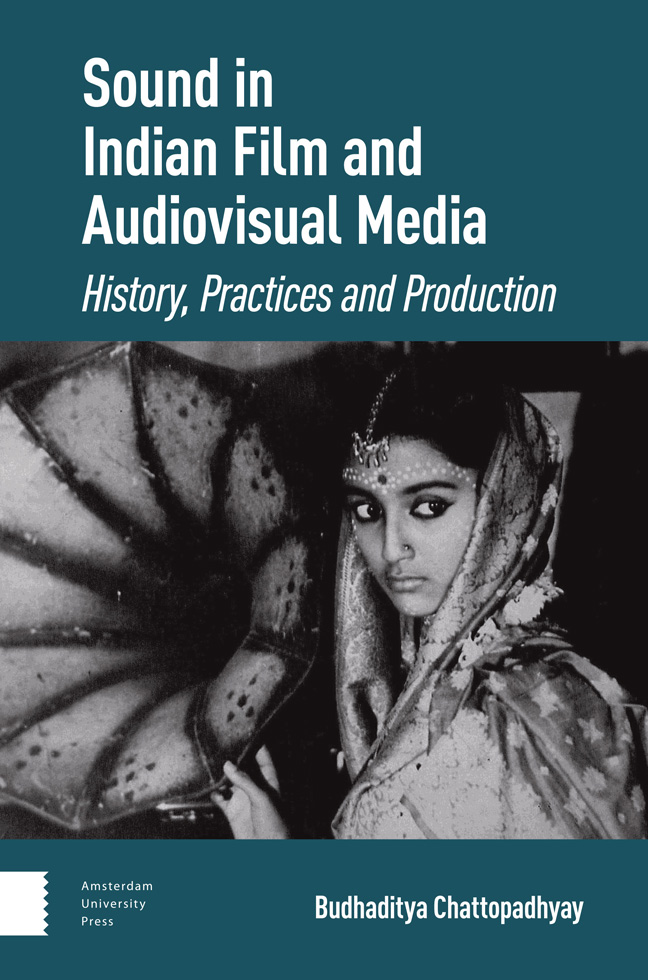Book contents
- Frontmatter
- Contents
- Acknowledgements
- 1 Introduction
- 2 The Technological Frameworks
- 3 Direct Sound and Early Talkies
- 4 Sound of the Golden Age
- 5 Tracing the Sound in Satyajit Ray’s Film-works
- 6 Popular Films from the Dubbing Era
- 7 Parallel Sounds, Radical Listening – Part I
- 8 Sholay, Stereo Sound and the Auditory Spectacle
- 9 The Advent of Digital Sync Sound
- 10 The Surround Revolution
- 11 Sound in the Audiovisual Media Arts
- 12 Parallel Sounds, Radical Listening – Part II
- 13 A Concluding Voiceover
- Bibliography
- Filmography
- Index
2 - The Technological Frameworks
Published online by Cambridge University Press: 20 February 2024
- Frontmatter
- Contents
- Acknowledgements
- 1 Introduction
- 2 The Technological Frameworks
- 3 Direct Sound and Early Talkies
- 4 Sound of the Golden Age
- 5 Tracing the Sound in Satyajit Ray’s Film-works
- 6 Popular Films from the Dubbing Era
- 7 Parallel Sounds, Radical Listening – Part I
- 8 Sholay, Stereo Sound and the Auditory Spectacle
- 9 The Advent of Digital Sync Sound
- 10 The Surround Revolution
- 11 Sound in the Audiovisual Media Arts
- 12 Parallel Sounds, Radical Listening – Part II
- 13 A Concluding Voiceover
- Bibliography
- Filmography
- Index
Summary
Abstract: The second chapter historicizes the technological trajectories of film sound production from early Indian cinema’s direct sound to the advent of digital technology, locating and critically charting the film industry’s foremost technological innovations and shifts: monaural synchronized sound recording; dubbing, and stereophonic mixing; digital multi-track synchronized recording and surround sound design. The chapter studies how these shifts manifested in emerging aesthetic choices embraced by sound practitioners and how these approaches are reflected in the production of sonic environments and presence. In other words, the various forms and formats of technological innovations and transformation have informed the usage of specific sound components. Central is the specific nature of sound’s usage in these corresponding and intercepting phases of recording and sound production in India.
Keywords: monaural recording, direct sound, stereophony, digital technologies, sync sound
Optical Recording and Direct Sound
The earliest sound recordings in India were registered in 1902, when London’s Gramophone and Typewriter Ltd. sent its recording engineers for an ethnographic expedition in South Asia to gather music and sound recordings. The intention of the company was to set up a sound industry in the colony in order to export the profit back to Britain through the exploitation of local resources, labour, and materials. Indian films were still silent when these developments took place. The gramophone had a separate trajectory of technological transmission in India, as did radio. Whereas the era of ‘talkies’ began in the United States with the release of The Jazz Singer in 1927, sound came to the still nascent Indian film industry only after investors and studio owners travelled to the United States to experience this new phenomenon. Once these producers, such as Jamshedji Framji Madan of the Madan Theatre, experienced sound film, they committed to bringing this technology to India. By 1931, the first Indian sound film, Alam Ara (Ornament of the World), directed by Ardeshir Irani, was released along with a large number of other films in Bombay, Kolkata, and elsewhere – all talkies.
The gramophone, and later film and radio, all modern inventions imported from the West, irrevocably altered sound practices in India in the early twentieth century. With the coming of sound recording technology, major unsettling transitions took place, and filmmaking moved from the hand of amateurs to the bigger studios that could afford the technologies of sound recording and reproduction.
- Type
- Chapter
- Information
- Sound in Indian Film and Audiovisual MediaHistory, Practices and Production, pp. 45 - 68Publisher: Amsterdam University PressPrint publication year: 2023

